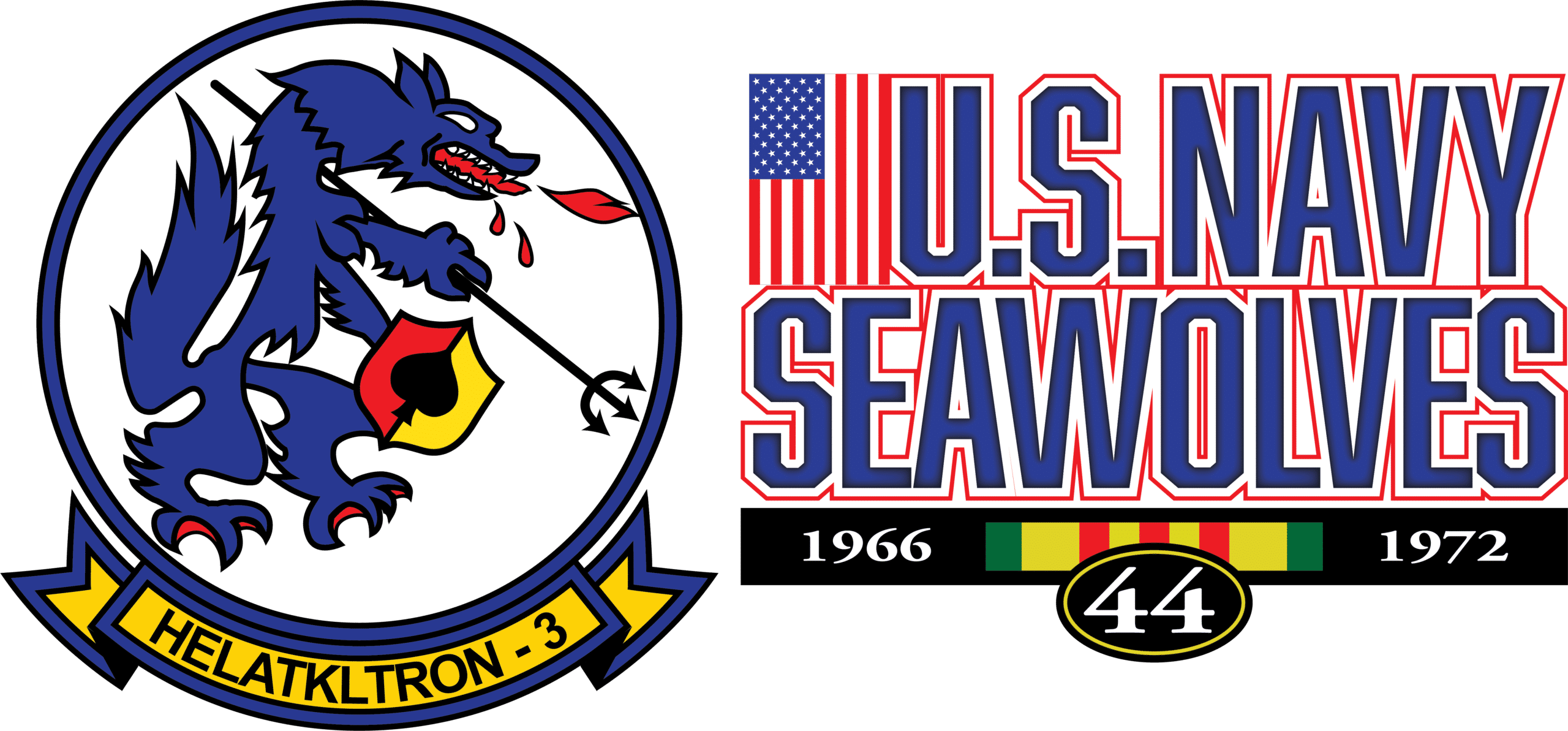Journal American Aviation Historical Society, Winter, 1988
From January through March 1967, the four detachments of HC-1 accumulated over 1,200 combat hours in support of the “Game Warden” river patrol force. After establishing a temporary headquarters in an old French hangar at Vung Tau, HA(L)-3 added over 9,000 additional hours from April through December 1967.
Fast reaction was a hallmark of the squadron which dated back to the HC-1 Dets. They had also gained a reputation of being available anytime they were needed. This ability extended not only to Naval units, but to other allied forces as well. When alerted, a Seawolf fire team could be airborne within two to three minutes, day or night, and many dets could launch in less than 60 seconds.
An example of this willingness to undertake nearly any mission was recently recalled by Matt Gache, who, in 1967, was a Det 1 pilot operating off the USS Garrett County (LST-786). He and his fire team were monitoring the radios in the Garrett County’s CIC when an urgent call for assistance was intercepted from a team of US Army Special Forces Advisors trapped in a Vietnamese Army encampment under heavy attack. It was a wet and rainy night with 500 foot ceilings, the kind of weather favored by the VC.
With no other units willing to accept the mission, the two Det 1 helicopters launched into the muck and chopped their way through the rain to the scene of action, a triangular shaped fortification on the south side of the Bassac River near it’s mouth. The situation was deteriorating rapidly for the camp was under heavy mortar fire and the VC had started to storm the walls. Even after arriving overhead and in spite of the severity of the combat going on below them, the rain and darkness combined to prevent an effective air strike. An Air Force AC-47 (Spooky) had also arrived overhead but couldn’t fire because he was above the overcast and couldn’t see either!
Ascertaining the Spooky has plenty of aerial flares aboard, the Seawolves solved this dilemma with a lot of ingenuity and a great display of inter service cooperation. Asking Spooky to maintain an orbit over the compound above the overcast and to start kicking out his flares, the Det 1 gunships waited below for the flares to appear. It was an eerie scene for the Seawolf crews, watching the night darkness gradually get lighter until the flares suddenly burst forth from the cloud base.
With rainy darkness turned into a surrealistic day of long, contorted shadows, the Det 1 gunships rolled in on their target now visible below. The Viet Cong, who never expected effective air cover under the dismal conditions, broke and ran on the helicopters’ first pass. Suspecting the enemy had retreated to a nearby canal, the two helicopters followed, carefully weaving their way through both ignited and burned out flares, hanging beneath invisible parachutes, which continued to float down from the AC-47 above. As expected, a large concentration of VC was found at the canal frantically trying to escape aboard sampans. The Seawolves brought their guns to bear once more, and, in the words of Gache, “It was a real turkey shoot. But the hairiest part of the whole thing was recovery aboard the LST. Our night vision was shot, it was raining, dark as hell and the LST’s had no night landing aids, only a small red light forward. ” It was on such missions as this that the Seawolf reputation was built.
During 1968, HA(L)-3 continued it’s support of the river patrol boats and their assistance to Task Force 117 intensified. The primary mission of HA(L)-3 was fire support and armed reconnaissance, but, as Navy operations expanded, the gunships were pressed into other duties. Most often this involved insertion and extraction of Navy SEAL teams in hostile areas. Before introduction of UH-1L’s in 1969, this was accomplished by the gunships flying without external armament.
Medevac Helicopters were always in demand but not always immediately available and on occasion HA(L)-3 gunships were hastily pressed into such duties when injured PBR sailors required immediate attention. Chuck Bagley of Det 1 performed one such operation in November 1968 when he removed a PBR crewman seriously injured in a fire fight. Hovering his gunship with one landing skid on the PBR’s stern, the wounded man was placed aboard while both the helicopter and PBR were still under enemy fire from the riverbank.
